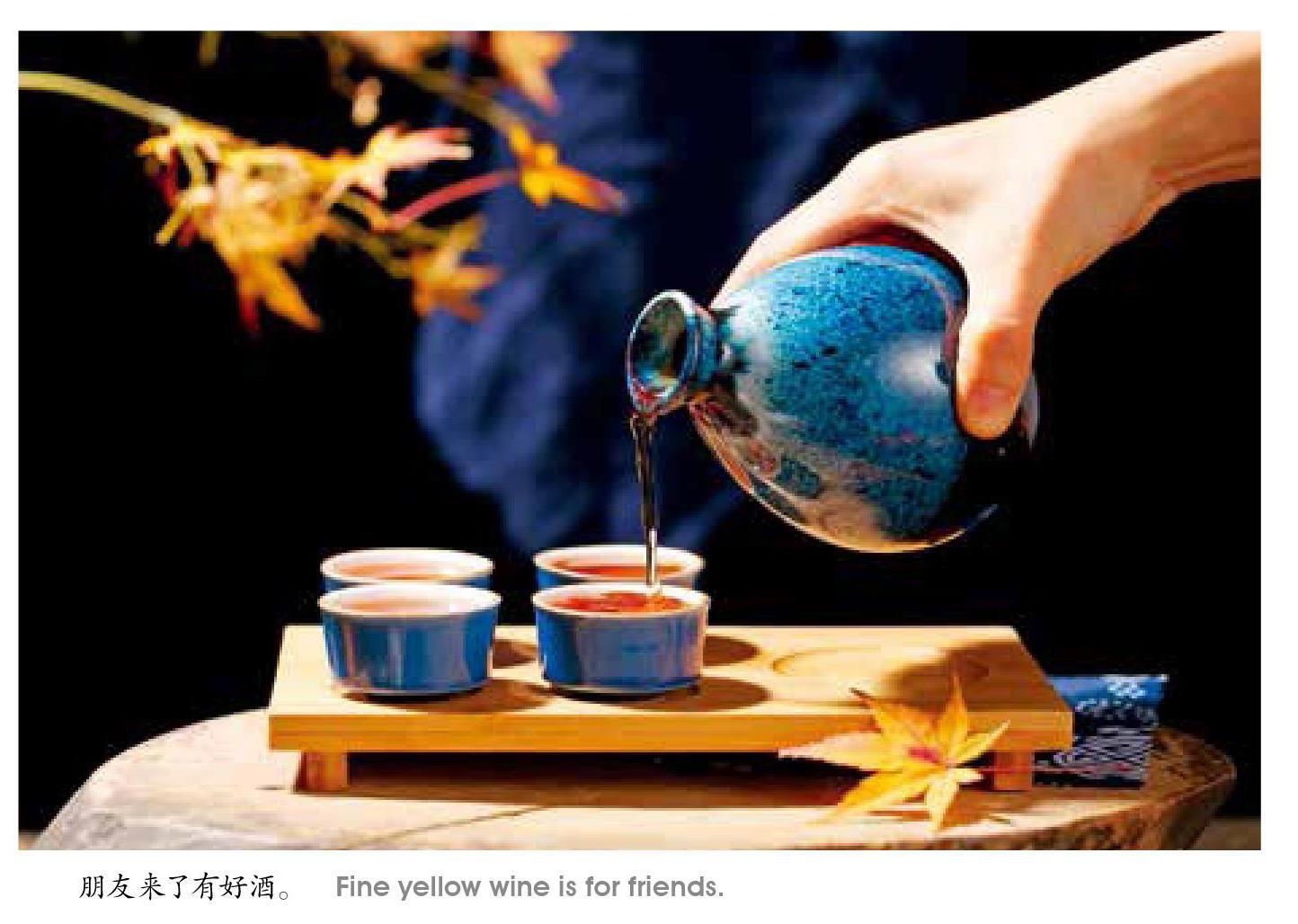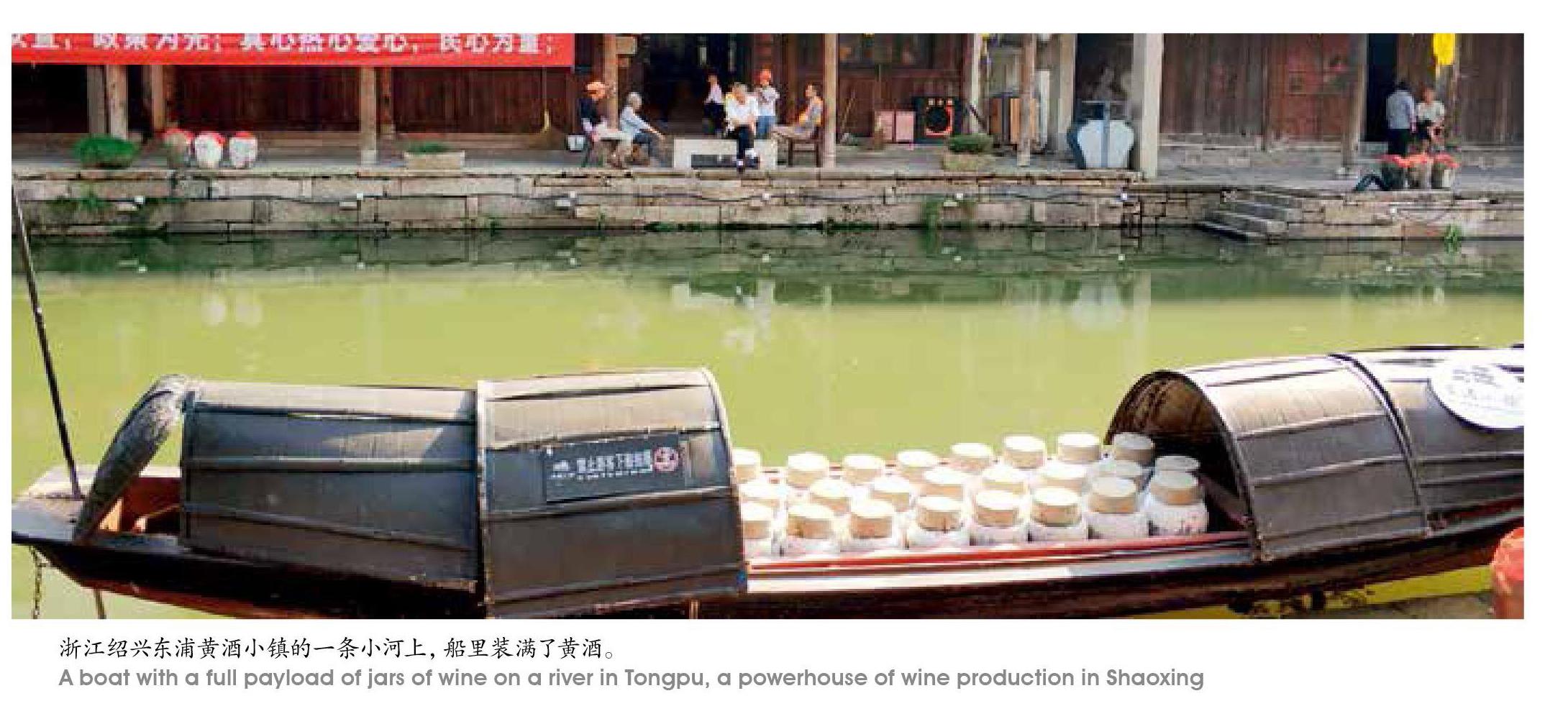黄酒记



作為一个山东人,略略知道山东是产酒的地方,有关饮酒的故事也多。白酒不必说;说到啤酒,青岛啤酒的名气谁不知晓?红酒,有烟台的张裕;就是黄酒,也有一种即墨老酒很是知名,我在山东时也品尝过,有一种焦糊的甜香味。
绍兴黄酒,其实也是在山东就知道的,我大学时期有位老师是浙江萧山人,我去他家,常见他喝一种加饭酒,那就是绍兴产的,彼时山东的副食品店里也有出售。我于新世纪初年入浙后,回山东时也曾经给他带去两瓶。可惜初来,对绍兴黄酒缺乏了解,以为加饭酒就代表了所有的黄酒,其实哪里是这样呢!
后来去绍兴机会多了,再说杭州也有很多专卖绍酒的店铺,就增加了不少对绍兴黄酒的了解。加饭之外,渐渐知道了花雕、太雕、女儿红以及会稽山、古越龙山、塔牌这些概念,不过对于它们之间的关系,还是说不太清楚。
这次又去绍兴,先在古越龙山酒楼用了午餐,品尝了三年陈、五年陈两种古越龙山黄酒,餐后就到附近绍兴黄酒城的中国黄酒博物馆以及地下酒窖、手工作坊参观。一位接待我们的主人——毕业于浙江工业大学的年轻专家详细讲解,让我又增加了不少关于黄酒和绍兴黄酒的知识。比如说黄酒以含糖量高低分了四类:干型黄酒叫元红酒,半干型黄酒叫加饭酒,半甜型黄酒叫善酿酒,甜型黄酒则叫香雪酒。太雕,不过是将这四种酒根据需要重新按比例调配的黄酒,相当于黄酒中的鸡尾酒;花雕呢,则是指包装用的瓷坛上面雕镂有彩色图案。
上面这段参观绍兴古越龙山黄酒城的文字,引来两位老先生的热情回应,他们一个是研究江南美食的专家宋宪章,一个是出生于绍兴的剧作家章胜利。他们的回应实乃对绍兴黄酒知识作了不同角度的延伸,我读了实在不忍舍弃,谨录于此,以飨与我一样对绍酒感兴趣的朋友。
宋先生跟我说,黄酒在绍兴有二千五百年历史。绍兴城南面有一条投醪(láo)河,传说越王句践要出征吴国,将酒倒在城南一条小河里,让所有士兵都能喝上酒去征战,故名。绍兴酒用会稽群山山泉水汇成的鉴湖水酿制,因含多种微量元素与酶,风味独特。杭州、上海等地及海外的日本都制作黄酒,但做不出绍兴的那种风味,因为只有用鉴湖水酿制,黄酒风味才有特色。
当我问及鉴湖水有何特殊成分时,宋先生又补充说:“有成份化验详单,可以到大的名酒厂去找。”
宋先生说,古越龙山、会稽山等酒在国内销售量较大,所以相对名气大,而塔牌黄酒主要供外贸出口,在国内名气反倒不如前两个。鉴湖集绍兴七十二源之水,绵长百里,所有绍兴水源均入鉴湖。鉴湖有三曲,以头曲水质最好,塔牌酒厂所在地为鉴湖头曲之地,独得其善,加之名师酿造,所以他认为,品质应是塔牌的好。
宋先生还回忆了自己与塔牌黄酒的一段渊源:10年前,绍兴老字号、专营出口黄酒的塔牌酒厂在省老字号协会的指导、协助下,召开了一次塔牌冬酿酒开酝典仪暨黄酒文化研讨会。全国有关黄酒的研究、经营、生产的专家与大酒厂领导人都应邀到会,计达30余人,开会并下榻在五星级富丽华酒店。省老字号协会邀请浙大民俗学家吕洪年教授和他参加了冬酿节开酝典仪及研讨会。他们两位在会上就酒文化的民俗与黄酒、美食之间的关系作了发言。后来,《中华老字号》杂志为塔牌黄酒冬酿节的开酝典仪及黄酒文化研讨会专门出了一期专刊。承蒙刊物主编路峰先生垂青,宋先生的发言文字稿及发言时所摄照片,得以同期刊发。绍兴之行结束时,增牌酒厂厂长还亲赠他们两人五年陈精装酒与三年陈平装酒各一瓶。
据宋先生说,五年陈塔牌酒一打开,酒香扑鼻,抿一口,口味甘洌,如饮琼浆玉液。那装酒之瓶,系定制的龙泉青花瓷,雅致之至,用来插花,没有比这更好的花瓶了。宋先生由酒说到他撰写发表美食文章的佳话。他告诉我说,他母亲祖籍绍兴,生前说过,长毛(太平军)造反时,先祖肩挑一担儿女及细软,从绍兴逃到老余杭西义桥村避难,在当地安家落户。虽已近百年,但宋先生对绍兴古城仍有亲缘之情。退休前,宋先生所在的学校开辟旅游课,教务处长指定他执教。绍兴是古越都城,为省内名胜古迹汇集之地,宋先生曾多次前往考察、收集资料,以供教学之用。每逢暑假,也总去绍兴,由当地学生陪同前往游览,故他对绍兴很熟悉,写下不少绍兴题材的旅游、美食随笔,散发于苏州、上海、武汉、汕头各地的晚报。
对我与宋先生的闲话,章胜利先生颇感兴趣,也留了一段话:“听两位酒仙说酒话,自然听着听着有些微醺的感觉了。鄙人出生于绍兴,乃酒的故乡。何况,刚满月时,父亲就用筷沾上酒让我尝尝家乡水的味道。故鄙人自称酒龄即是年龄矣!爱酒人总结一生喝酒的感受,认为微醺最好,大醉无趣。”何谓“微醺”?答曰:“在沉醉与清醒之间,亦即微醉、略醉,也许是半醉,至多是七八分的醉。酒家对此种境界更为推崇。似乎可以说,喝酒在醉与不醉之间更有趣。太醉为亵渎酒神,不醉为冷落仙子。饮酒微醺,飘飘欲仙,精神振奋,头脑清醒,余香满口,吹气如兰,个中妙趣,有不可言传者。”
绍兴人章先生对绍酒知根知底,听其一番话,特别有感觉,他还风趣地即兴附上一首诗曰:“花间一壶酒,独酌无相亲。闲来学种花,春色满乾坤。子张兄一起来猜酒令!”我是个什么都不舍得扔掉的人,对于这样一份“优雅”,又如何舍得随便丢弃呢!
(本文图片由视觉中国提供)
What I Know aboutYellow Wine
By Zi Zhang
Though I am a native of Shandong, a coastal province in eastern China, I knew something about yellow wine when I grew up. Shandong is a giant producer of wines: spirits, beers, and grape wines, and a yellow wine, which I tried and found it sweet and an additional flavor of something burnt. In my college years in Shandong, I often visited a college teacher who came from Xiaoshan, now a district of Hangzhou. I sipped some Jiafan yellow wine at his home. I came to work and live in Hangzhou shortly after the beginning of the new century. When I first went back to Shandong for a home visit, I brought two bottles of yellow wine to him as gift.
In the first years in Zhejiang, I mistakenly thought Jiafan was all there was to know about Shaoxing yellow wine. Gradually, however, I noticed various wine shops in Hangzhou selling different kinds of yellow wine from Shaoxing. Yet, these differences remained mysterious to me.
At a lunch during a visit to Shaoxing, I tried two kinds of Gu Yue Long Shan yellow wine, one aged for three years and one aged for five years. After the lunch, I visited China Yellow Wine Museum where there is a cavernous wine cellar and a workshop where yellow wine is made manually in a traditional way.
A wine expert who is a graduate of Zhejiang University took me around and gave me a detailed account of yellow wine and Shaoxing yellow wine. The explanation was comprehensive and thorough for an outsider like me who knew little about the yellow wine produced in Shaoxing. I learned that there are four kinds of wine differentiated according to their dryness or sweetness.
Later I consulted Song Xianzhang, a food expert with profound knowledge of cuisines in Jiangnan, and Zhang Shengli, a native of Shaoxing and playwright, about Shaoxing yellow wine. They gave me insights into yellow wine from different perspectives.
According to Song, the yellow wine of Shaoxing dates back to 2,500 years ago. Wineries in Shaoxing use the water of the Jianhu Lake. All the 72 rivers and streams around the mountains in Shaoxing flow into the Jianhu Lake.
The water contains trace elements and enzymes, whose natural combination and quantities you cant find anywhere else. Yellow wine is also made in Hangzhou, Shanghai, and Japan, but theirs lack the special flavor native to Shaoxing. Song says that leading wineries in Shaoxing have tested the water and they have detailed reports of what they found in the water of Jianhu Lake.
Gu Yue Long Shan (Literally, Ancient Yue, Dragon Mountain) and Kuaijishan (Kuaiji Mountain) are well known in China because the two brands are the main wine brands on domestic markets. Ta Pai (Pagoda Brand) wine is largely exported to overseas markets and is therefore not so popular at home. Song points out, however, Ta Pai is a better yellow wine essentially because it occupies the best location where it can tap into the best water resource.
Zhang Shengli says he first experienced the taste of yellow wine when he was only 30 days old. At the celebration dinner, his father dipped a chopstick into yellow wine and put the tip of the chopstick between the babys lips so that the baby could have the first touch of the water from hometown. Zhang says his drinking age is only 30 days short of his real age. While talking about enjoying yellow wine, he says half drunken and half sober is the best pleasure a drinker can enjoy. When one is half drunken and half sober, one feels good and the pleasure is more than words can describe and convey.

